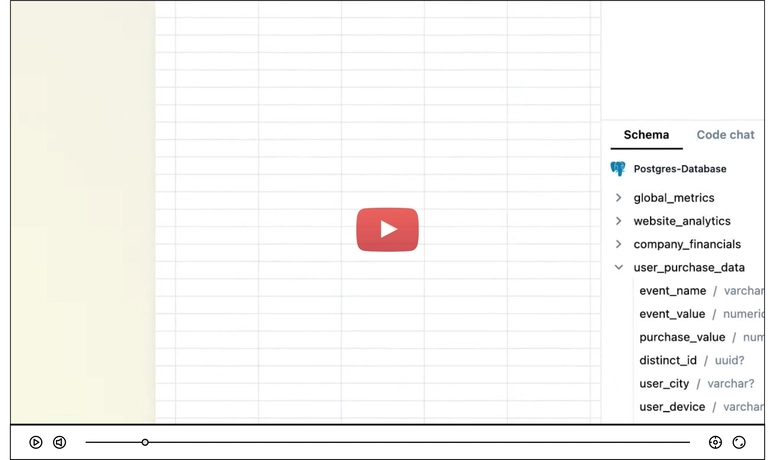Imagine having to make strategic decisions in complete darkness. You have ideas. You have instincts. However, you cannot see anything. That's what it's like to manage a modern firm without data.
In today's data-driven environment, making judgments without accurate information is no longer possible. Companies that succeed—those that can predicted trends, change swiftly, and remain ahead—all have one thing in common: they rely on data. However, this is not just any data. They use web scraping to get it.
Web scraping is no longer just a tool for engineers and programmers. It has become a secret weapon for companies, analysts, marketers, and decision-makers looking to develop smarter strategies faster.
What Is Web Scraping, and Why Is It Game-Changing?
Web scraping is the automatic extraction of data from websites. It enables you to convert unstructured online content into structured, useable datasets. Web scraping allows you to collect everything—including product prices, user reviews, social network posts, financial trends, and real-time news—on a large scale.
Why is this game-changing?
Because the web is the largest data source on the planet. And unlike internal business databases, the web is full of live, real-world, and consumer-facing information. You’re tapping into what’s happening right now, not what happened last month.
And that’s exactly what smart decision-making demands.
The Problem with Traditional Data Sources
Before web scraping became mainstream, most decisions were based on historical data, survey results, or internal reports. These sources have one thing in common—they’re often limited, slow, or expensive to update.
Here’s where traditional sources fall short:
- They age quickly: In fast-moving industries like eCommerce or finance, yesterday’s data might already be outdated.
- They lack scale: Internal data shows your side of the story. What about your competitors? Your customers?
- They miss the big picture: Customer behavior, market trends, and pricing strategies often live outside your organization.
This is where web scraping gives you a decisive edge. You don’t just look inward. You look everywhere.
Smarter Market Research with Live Data
Let’s say you’re launching a new product. You need to know the competitive landscape. With web scraping, you can instantly gather:
- Competitor pricing data
- Product reviews
- Popular search keywords
- Best-selling items
- Customer feedback patterns
That’s not just research. That’s real-time market intelligence.
Now, imagine feeding that information into your pricing models or marketing strategy. You’re not guessing—you’re responding to what’s happening live.
Whether it’s Amazon listings, travel fare changes, or hotel rates, web scraping turns the entire internet into your personal dashboard.
Making Smarter Financial and Investment Decisions
For investors, speed and timing are everything. A small delay in reacting to market shifts can cost millions. That’s why hedge funds, traders, and financial analysts are heavy users of web scraping tools.
Here’s how they leverage it:
- Scraping news headlines for trend signals
- Tracking social sentiment from Twitter or Reddit
- Monitoring financial reports and SEC filings
- Extracting crypto or stock prices in real time
The result? A competitive edge that’s impossible to get through manual research.
When you scrape financial data across the web and apply sentiment analysis or natural language processing, you’re no longer just reacting—you’re anticipating.
Gaining Competitive Intelligence Without the Guesswork
One of the biggest uses of web scraping is competitive analysis. Why?
Because you need to know what your competitors are doing before your customers do.
Web scraping lets you monitor:
- Price fluctuations
- Product launches
- SEO rankings
- Ad campaigns
- Customer reviews
- Website changes
You can even track their inventory levels or shipping timelines if they’re visible online. This gives you a real-time mirror into your competitors’ strategy.
Instead of waiting for quarterly reports or analyst predictions, you’re staying one step ahead—always.
Predictive Analytics Powered by Web Data
Web scraping isn’t just for reacting to what’s happening now. It can also help predict what’s coming next.
You unlock powerful forecasting capabilities when you gather large volumes of public data and feed them into machine learning models or BI platforms.
Use cases include:
- Demand forecasting for retail
- Trend prediction in fashion or tech
- Consumer behavior analysis based on social media
- Supply chain disruptions signaled through news alerts
Web scraping doesn’t just show you what is. It gives you clues about what’s coming.
That’s why data scientists and analysts often call it a foundational input for predictive analytics.
Customer Sentiment, Reviews & Trends: The Voice of the Internet
Customer reviews and online chatter are gold mines for decision-makers—but only if you can extract and organize them.
With web scraping, businesses collect:
- Product reviews from Amazon, Yelp, or Google
- Forum discussions and Reddit threads
- Social media posts and comments
- App store feedback
By analyzing this unstructured data, you can detect:
- Pain points in your products
- Strengths and weaknesses of competitors
- Emerging customer expectations
- Opportunities for innovation
This is how brands build customer-centric strategies—by listening to all the voices online, not just survey responses.
Local and Global Insights at Scale
Web scraping doesn’t just provide broad market insights—it lets you zoom in and out.
You can scrape location-specific data for hyperlocal strategies. For example:
- Restaurant Reviews in São Paulo
- Real estate listings in Seoul
- Weather trends affecting local farming
- Local SEO rankings
On the flip side, you can also scale globally—scraping thousands of domains in multiple languages to understand international market trends.
This makes web scraping a powerful tool for businesses targeting regional growth or global expansion.
Automating Decision-Making with Web Scraping APIs
Manual research takes time. But web scraping automates it.
By using scraping APIs and tools, businesses can integrate external data directly into their dashboards, CRMs, or analytics platforms.
Popular use cases:
- Real-time price monitoring tools
- News alert systems
- Reputation management dashboards
- Lead generation from directory sites
- SEO rank trackers
You’re not just scraping data. You’re building a live data ecosystem that fuels smarter, faster, and more informed decisions—day after day.
Final Thoughts: Web Scraping Is No Longer Optional
Let’s face it: In 2025, smart businesses aren’t asking if they should use web scraping. They’re asking how fast they can scale it.
The internet holds more strategic value than ever. Those who harness its data make better moves, serve customers better, and innovate faster.
Whether you're a startup founder, a product manager, a data analyst, or a CMO—web scraping is your secret weapon.
If you're not using it yet, you're already behind.





Top comments (0)